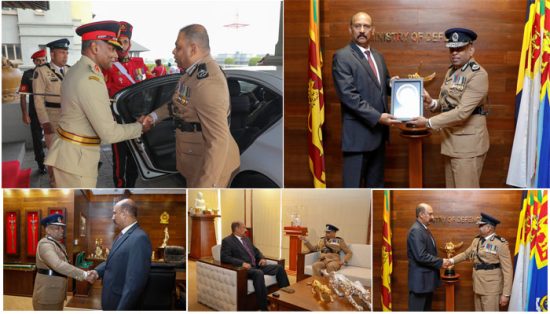
Inspector General of Police (IGP) Deshabandu Tennakoon paid a courtesy visit to the Defence Secretary General Kamal Gunaratne at the Defence Ministry in Sri Jayawardenepura, Kotte today 11th of March.
Gen. Gunaratne warmly received the newly appointed IGP and held a cordial discussion focusing mainly on national security matters along with Law and Order. During the session, the Defence Secretary also extended his warm wishes to IGP Tennakoon on his recent appointment.
H.E. the President Hon. Ranil Wickremesinghe appointed Deshabandu Tennakoon as the 36th Inspector General of Police of Sri Lanka and he assumed duties on Feb 29 at the Police Headquarters.
The meeting concluded with the exchange of souvenirs to mark the occasion. Military Liaison Officer of the Defence Ministry Maj. Gen. Dhammika Welagedara was also present at the occasion.






